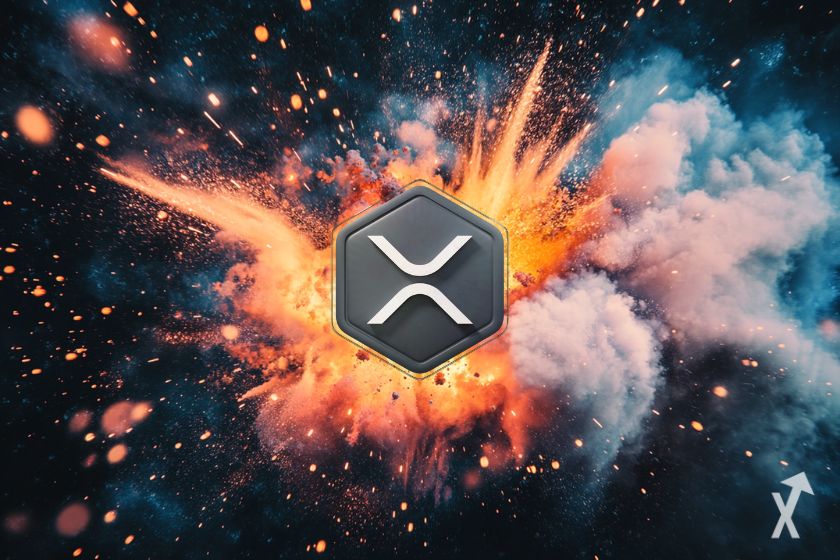What is crypto staking ?
Staking is a way to earn cryptocurrencies by locking them up and making them available to the network.
It is also and above all a means of verifying transactions on blockchains based on Proof-of-Stake.
On blockchains, each transaction is verified and one of the consensus that exists is the Proof-of-Stake. It is a means of verification that involves storing an amount of the crypto in question.
For a user who holds a certain cryptocurrency, staking is an opportunity to earn interest by putting their tokens to work in the blockchain.
In most cases, crypto staking can be done directly from a cryptocurrency wallet and decentralized applications (dApps). It is also possible to do this through one of the services offered by an exchange (cryptocurrency platform) such as Binance.
What is a Proof of Stake (PoS) – central element of staking ?
In order to fully understand what staking is and what instrument is used, it is necessary to know how Proof of Stake – PoS works.
A “Proof of Stake” is a consensus algorithm for blockchain networks based on validators (miners) who are part of the user community.
These validators “store” their own tokens from the native network by locking them on the network. They are rewarded according to their contribution, which encourages them to participate in the operation of the network thanks to a good return on investment.
PoS is considered a greener and more scalable version of the original consensus Proof of Work – PoW (Proof of Work) used in the Bitcoin blockchain. It is not based on as many random calculations as PoW.
Rather than solving complex mathematical problems to maintain network security, the PoS mechanism encourages and incentivizes users to participate in the blockchain network, in exchange for a reward in the form of cryptocurrency.
The PoS mechanism allows users to earn passive income by simply storing tokens while earning cryptocurrencies.
In general, validators are selected to form the next block based on the size and average duration of their contribution. A higher contribution gives more opportunities to participate in the creation of the next block.
The blocks proposed by the validators are transmitted to the other participants, who verify them and add them to the blockchain.
Some users or protocols gather a lot of funds to create a staking pool to have greater power and have a better chance of validating blocks.
Difference between PoS and PoW
PoS algorithms trick users into validating network data and ensuring security through a staking process.
These “validators” must buy and “stake” tokens to earn additional blocks. They only have to spend money once to participate.
In contrast, a miner in a Proof of Work (PoW) system must purchase mining equipment and operate it indefinitely, resulting in significant and fluctuating energy costs.
How to stake crypto ?
To stake a cryptocurrency, you have 2 main choices :
- Use a wallet that works on the blockchain of the cryptocurrency you want to stake
- Delegate the task to a platform like eToro or Binance
In any case, the first step is to choose the cryptocurrency you want to stake, taking into account the blocking period which can sometimes be up to a year.
Some programs offer to stake their funds without locking their money and others offer “locked staking” programs where the user blocks their funds for a fixed period.
Also make sure that the Proof-of-Stake mechanism is used in the blockchain you have chosen.
In addition, whether you use the services of your own wallet, a dApps or an “exchange“, you must check these 3 essential points :
- What is the minimum amount to invest on the platform?
- Does the wallet allow you to “stake” 7 days a week and 24 hours a day
- How long should assets be locked in before cashing out the first winnings
Finally, you need to buy cryptocurrencies. This can easily be done in 4 steps :
- Register on a platform
- Confirm your identity in a few steps
- Make a first deposit
- Buy the cryptocurrencies that interest you
Is staking risky ?
When it comes to cryptocurrencies, staking is known to generate passive income and a predictable return.
You lock cryptocurrency for a certain duration, and at the end of that duration, you receive the amount you had locked with additional interest based on the amount and how long you left your crypto.
The logic of this reward is that staking increases capitalization and at the same time, investor confidence.
Therefore, one would think that staking is good for everyone and that there are no risks. But this is only an appearance and here are the main disadvantages associated with this type of operation :
- The price of the “staked” cryptocurrency can collapse during the staking period
- Winning opportunities may not be paid out
- The platform chosen for staking can be hacked
- Unstaking may take some time
Generally, staking is a fairly safe investment strategy for which the risks can be measured upstream. Certainly, there is always a risk but it is possible to reduce it greatly.
As with any type of crypto investment, it is a question of finding out about the currency you want to stake and the platform on which you are doing it. Some platforms offer high returns with lower risk.
Our opinion on cryptocurrency staking
Staking is becoming increasingly popular. Many users even claim that it is as profitable as mining. Because unlike mining, it does not generate overheads or high electricity costs.
The amount of money you win by betting depends on a number of factors such as, among others, the block reward, the size of the blocked offer, the maximum possible reward and possibly the size of the pool (meeting of several investors).
In general, the longer you hold (stake) the chips, the higher the payout. However, the value of the currency must also be taken into account when calculating the gain.
The main staking platforms and their returns
Here are some platforms to start staking easily in 2022 :
- Aqru : Minimum deposit amount of $100. 7% return on crypto, up to 12% on stablecoins. Annual interest paid daily. Main currencies: BTC (Bitcoin), ETH (Ethereum), DAI, but also USDT and USDC
- EToro : Minimum deposit amount of $50. Yield of 75% up to 90% depending on the chosen plan. Monthly pay. Currency: ADA, TRX
- Binance : Minimum deposit amount. Variable yields ranging on average between 6 and 9% up to 30%. Currency: BNB (Binance Coin)
- Coinbase : Minimum deposit amount of $1. Variable yields evolving on average between 3 to 5%. Remuneration from daily to bi-weekly. Main coins: XTZ, ATOM, ETH, ADA (Cardano)

















